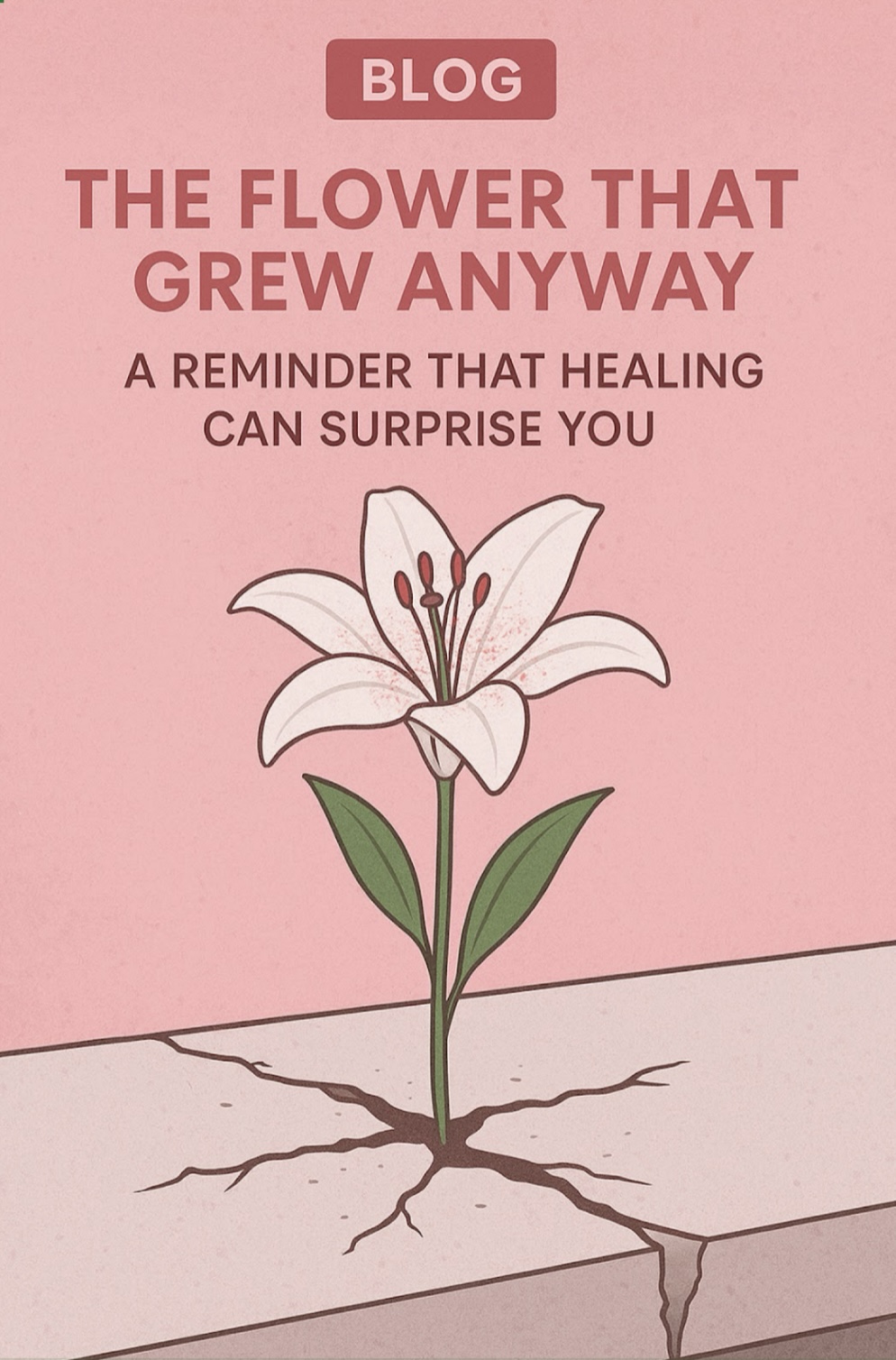
✨ You’ve Heard of PTSD—But What About PTG?
Spoiler: It’s not a typo, and it might be exactly what you need to hear.
We talk a lot about post-traumatic stress—and we should. Trauma can seriously mess with your brain, your nervous system, your sense of self, and your playlist (why does Adele hit different after a breakup??).
But let’s flip the script for a sec.
There’s another term that doesn’t get nearly enough love:
🌱 Post-Traumatic Growth (aka PTG—the cooler cousin of PTSD)
When we think of trauma, we usually focus on the pain, the stress, the struggle—and for good reason. Trauma can shake up everything you thought you knew about yourself and the world around you.
But here’s something we don’t hear about nearly as often: post-traumatic growth.
That’s right. Not just recovery. Not just survival. Growth.
So, What Is Post-Traumatic Growth?
Post-Traumatic Growth (PTG) refers to the positive psychological changes that can happen after a major life crisis or traumatic event. It’s not about pretending things are fine. It’s about discovering new strengths, insights, or values as you move forward.
People who experience PTG often describe things like:
- A greater appreciation for life
- Stronger, more meaningful relationships
- A deeper sense of personal strength
- New possibilities or goals
- A shift in spiritual or philosophical beliefs
PTG doesn’t mean the trauma was “good” or that the pain goes away. It simply means that—over time—something meaningful may grow from the experience.
How Does This Growth Happen?
It’s not instant. There’s no “bounce-back” moment. Post-traumatic growth tends to develop after a long period of reflection, emotional processing, and inner work. The journey usually looks something like this:
- Disruption – Your worldview is shaken. Life feels unfamiliar and uncertain.
- Struggle – You wrestle with big questions, painful emotions, and what it all means.
- Reflection – Over time, you begin to piece things together and rethink your values.
- Growth – New priorities emerge. You may feel more grounded, grateful, or focused.
This doesn’t erase the trauma—it simply adds a new layer to your story.
Why Don’t We Hear More About PTG?
There are a few reasons post-traumatic growth tends to stay under the radar:
- PTSD is more visible and widely understood. Emotional pain and symptoms demand attention. Growth is quieter.
- We’re careful not to minimize pain. And rightfully so—healing isn’t a competition.
- Growth can be deeply personal. It doesn’t always feel like something to announce or define.
But here’s the key: You can honor the pain and still acknowledge the progress. You don’t have to choose one or the other.
A Note of Caution
Post-traumatic growth isn’t a requirement. Not everyone will experience it, and that’s okay. You’re not failing if you’re still healing, grieving, or feeling stuck. Growth doesn’t happen on a schedule, and it doesn’t look the same for everyone.
If you do notice positive shifts over time—whether it’s greater self-awareness, clearer priorities, or deeper empathy—those are valid and worth celebrating.
Final Thoughts
Post-traumatic growth doesn’t mean things go “back to normal.” Often, it means building something new from the ground up—something that reflects who you are now, not just who you were before.
So if you’re still in the thick of it? That’s okay. Growth isn’t a race or a reward—it’s just something that might show up when you least expect it. And if it does?
Let it.
By: Sophie Limbourg
